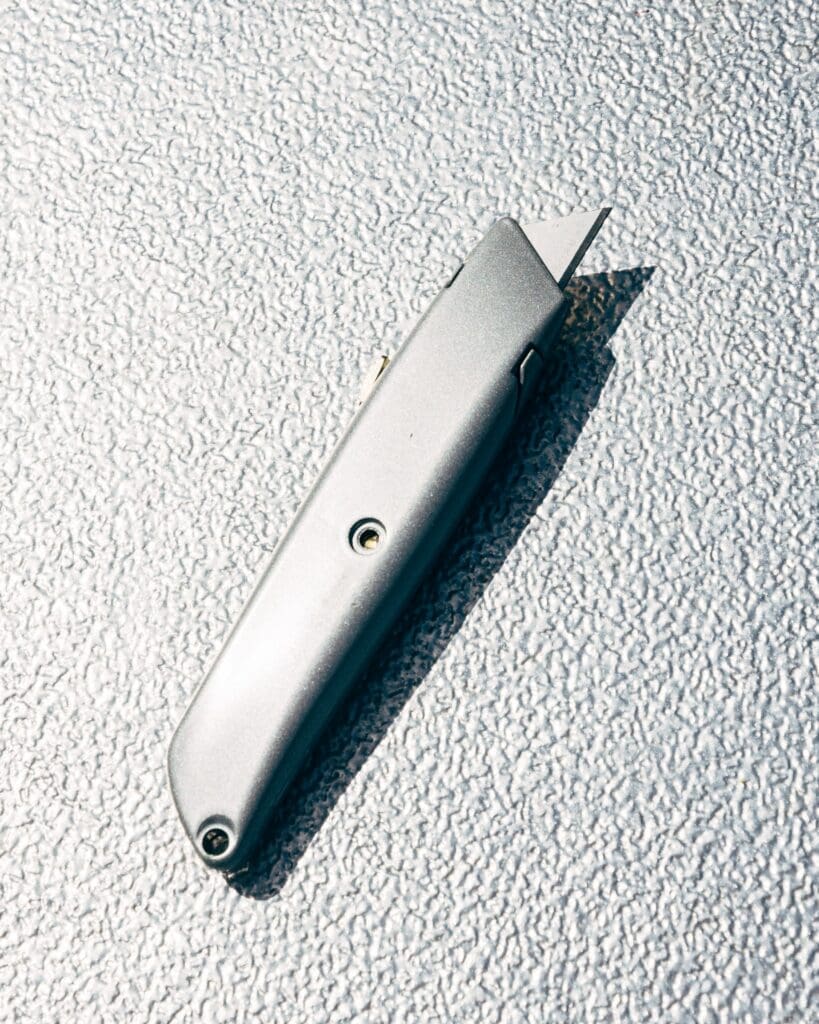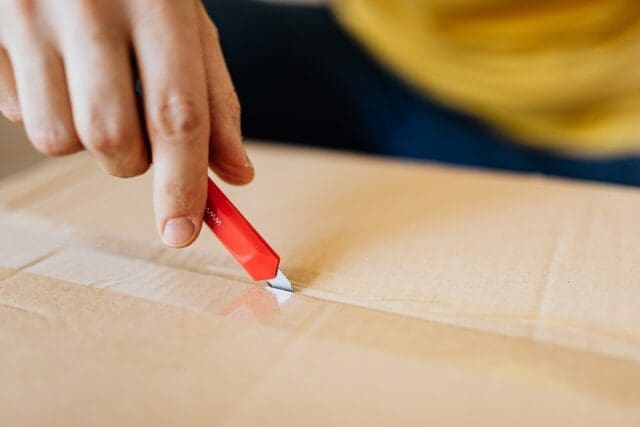You walk into a store or peruse online for a box cutter. You know what you want a box cutter for—to cut cardboard, or maybe drywall or carpet. For work use or home use, a box cutter is a pretty useful cutting option to include in your toolbox. But with so many options available, trying to find the best box cutters for your needs will come down to a few factors. Consider what projects you’re involved in, what blade material and edge make the most sense, and fixture options.
Jot down a few ideas not just about how you’re using a box cutter now but also how you’ll need to use one in the future. By knowing what you’ll use your cutting utensils for, you can then brainstorm on what type of edge you need on your blade and your most ideal blade storage options. See below for box cutter storage options and how to recognize the difference between the edges.
Choosing the Right Box Cutter
Most boxes are made from either single-walled or double-walled cardboard. They are not thick and don’t require a long blade to cut them. To cut these, you want a box cutter that has an adjustable edge so you can set the length for safety.
There are different types of blade materials to consider as well. Metal blades are typical for most brands. They can be dangerously sharp when they come from the manufacturer.
Suppose you plan to work on wires or electrical equipment. In that case, you don’t want to use a metal blade because it can conduct electricity, causes sparks, is magnetic, and can rust.
Ceramic blades are a second choice. These blades can be just as dangerously sharp as metal blades. However, they are non-conductive and less likely to cause sparking. For added safety, you may consider purchasing a box cutter with a ceramic, finger-friendly blade. Box cutters like these are double-ended with ceramic blades that won’t rust and will serve you safely.
Different Types of Box Cutter Edges
Know which box cutter is the best for your task. It’s best to explore the different types of blades available. There are six different blade types.
- Round tip blade
- Serrated blade
- Hook blade
- Pointed tip blade
- Snap-off blade
- Scalloped blade
A deeper look into each type will help you to know which one you need.
Round Tip Blades
Rounded tip blades are, as the name implies, box cutting blades that have rounded ends. These blades are typically used by people who want to cut something but not necessarily puncture it. If you need to cut cardboard or Styrofoam, the rounded tip blade is a perfect choice.
Serrated Blades
When you think of a box cutter, your mind probably goes to traditional handheld knives with a straight edge. While those are the most popular, it is not the only type of edge. Those who find they need to cut through more rigid items such as drywall, a box cutter with a serrated blade might be a better choice. These edges are like that of a steak knife and ideal for sawing through denser items.
Hook Blades
A hook blade is commonly used by construction workers who lay carpet or linoleum and roofers. The edge is hook-shaped to help pierce and control the cut better. Its design is to cut through heavy-duty materials, making it ideal for construction workers.
Pointed Tip Blades

Pointed tip blades are the more common type of box cutter blades. These have a straight edge that ends with a point on each end. It is ideal for puncturing first and then cutting. It is a good choice for those cutting plastic or fabric.
Snap-Off Blades
A snap-off blade gives you a way to get a new blade without having to replace it. It was designed in 1956 by Mr. Y. Okada, the founder of Olfa Corporation. It was inspired by breaking off sections of chocolate bars and studying the snapped edges of broken glass. A snap-off blade is segmented to allow you to break off the dull portion and have a sharp edge ready for immediate use.
Scalloped Blades
Scalloped blades are usually found on utility knives used for the kitchen. It’s best for cutting through fruits and vegetables without squashing them. Because of this ability, the scalloped edged blades are ideal for cutting through Styrofoam to reduce a potential mess.
Should You Buy Fixed, Retractable, or Folding Knives?
When considering which box cutter is suitable for your needs, you must consider how the blade is housed. Box cutters come with either a fixed or retractable blade or a folding knife.
Fixed Blade
A fixed blade knife is how it sounds. The blade is in a fixed position and cannot be retracted inside the housing. These knives provide precise cuts, and the edge is stronger than retractable. Because the blade is already exposed, there are more significant safety risks associated with these knives. The cap should be replaced when not in use, but it is easy to lose, especially on a worksite.
Retractable Blade
Retractable blades return the blade inside the housing for safer storage. These knives can be manual retracting or automatic depending on the brand you purchase. Manual retracting box cutters have a button that you push to expose the blade and then pull back to retract it. Automatic has a button you either push or hold down to expose the edge. Once you release the button, the blade automatically returns to the housing. Some automatic knives also return to the housing if the blade loses contact with the cutting surface.
Folding Blade
A folding blade is a fixed blade that folds for storage. These cutters are smaller than one-handed knives when closed, making them easy to transport. Additionally, there is no cap to keep track of for storage.
Take the time to determine what tasks you need a box cutter for. A box cutter is a must for every toolbox. Once you know your needs, you can choose which type of edge you need, along with the best handle for storage.
Featured Photo by Karolina Grabowska from Pexels




